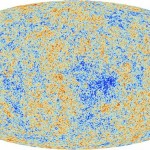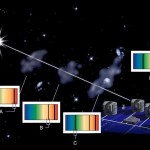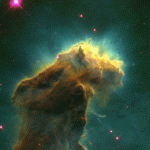Astronomy
"I'd rather fight 100 structure fires than a wildfire. With a structure fire you know where your flames are, but in the woods it can move anywhere; it can come right up behind you." -Tom Watson
The solar eclipse we've all been waiting for is just two weeks away. Yet even though you've got your eye protection ready, your location picked out, and your plans all set, there's a wild card you need to be aware of: wildfires. The total solar eclipse in Oregon, Idaho, and Wyoming-west-of-the-rockies coincides with peak wildfire season, and with over a million people headed to a 70-mile-wide strip of…
“If man is to survive, he will have learned to take a delight in the essential differences between men and between cultures. He will learn that differences in ideas and attitudes are a delight, part of life's exciting variety, not something to fear.” ―Gene Roddenberry
Well, it happened, everyone! I flew out to the official Star Trek convention in Las Vegas, and the people I met there and the events and panels I attended (and participated in) were largely fabulous! Best of all, I got to line up a number of future podcasts about science, Star Trek, and everything in between, so stay tuned in…
"My dad took me out to see a meteor shower when I was a little kid, and it was scary for me because he woke me up in the middle of the night. My heart was beating; I didn't know what he wanted to do. He wouldn't tell me, and he put me in the car and we went off, and I saw all these people lying on blankets, looking up at the sky." -Steven Spielberg
The full or almost-full Moon might be one of the most familiar sights in the night sky to those of us here on Earth, but it’s also the largest natural source of light pollution we have to contend with. The peak of this year’s Perseid meteor shower…
"Ultramassive black holes — that is, black holes with masses exceeding 10 billion solar masses — are probably not rare; several and even dozens of these colossal black holes may exist." -Julie Hlavacek-Larrondo
The largest black hole in the Universe was a shocker when it was first discovered. At 40 billion solar masses, it certainly is impressively large. Like other quasars and active galaxies, it has a luminous accretion disk that can be seen from a great distance. Like only a few, one of its two incredibly energetic, polar jets is pointed directly at Earth, creating a blazar, the…
"...and the Sun has perished out of heaven, and an evil mist hovers over all." -Homer's Odyssey
The great american eclipse is coming, and you're in luck! This astronomical sight is unlike anything else that occurs on Earth (or any rocky planet in the Solar System), and there are three incredible stories that it teaches us about the world. First, there's the incredible story about the Moon, Earth, and Sun in orbit, teaching us about our solar system, alignments, and even the curvature of the Earth.
An illustration of the Sun-Moon-Earth configuration setting up a total solar eclipse. The Earth…
“Some people think that the truth can be hidden with a little cover-up and decoration. But as time goes by, what is true is revealed, and what is fake fades away.” -Ismail Haniyeh
Have you ever seen some beautiful, breathtaking, awe-inspiring pictures of the Universe, with what appears to be a too-good-to-be-true view? While there are some real, spectacular pictures out there, there are even more pictures claiming to be something other than what they are. Oftentimes, nature’s most beautiful sights are captured earnestly, and then ruined by someone sharing out a fake version, passing it off as…
"Lord of Light! Come to us in our darkness. We offer you these false gods. Take them and cast your light upon us. For the night is dark and full of terrors." -Melisandre, George R.R. Martin's A Song of Fire and Ice
Imagine a world where you know that winter is coming, but you don’t know when, or for how long, or how severe it will be. Sounds like fiction, doesn’t it? In our own solar system, where planets orbit a single star in elliptical, well-separated orbits, this is extraordinarily unlikely. But if a binary giant planet existed in the habitable zone, and a world like Earth orbited both of…
"We really expect the mission to be transformational. This is the capstone of the original visits to the planets. It takes us 4 billion miles away and 4 billion years back in time." -Alan Stern
When the Hubble Space Telescope discovered additional moons of Pluto, beyond Charon, it was speculated that New Horizons might find more. After all, objects more than ten times as far away as Hydra, Pluto’s outermost moon, would still be in stable orbits. Yet, with five inner moons and nothing beyond, not even diffuse rings, the spacecraft came up empty.
This image, taken by NASA's Hubble Space…
“Having totality means being capable of following 'what is,' because 'what is' is constantly moving and constantly changing. If one is anchored to a particular view, one will not be able to follow the swift movement of 'what is.'” -Bruce Lee
If you’ve never seen a total solar eclipse before, you’ve likely heard about many of the features to look for, like the sky darkening during the day, the Sun disappearing, and the solar corona and, occasionally, stars becoming visible during the day. But if you take an enhanced view, either with binoculars, a telescope, or photography, so much more…
“Gamow was fantastic in his ideas. He was right, he was wrong. More often wrong than right. Always interesting; … and when his idea was not wrong it was not only right, it was new.” -Edward Teller
100 years ago, our conception of the Universe was so small it's almost laughable. We still were mired in Newtonian thought, conceiving only of the stars within our own Milky Way, with a Universe that was perceived as static and unchanging, and where the stars which made it up perhaps even lived forever. Yet today, we have a Universe that's expanding, cooling, full of dark matter and dark energy, and…
“Jupiter instead cooled down below the threshold for fusion, but it maintained enough heat and mass and pressure to cram atoms very close together, to the point they stop behaving like the atoms we recognize on earth. Inside Jupiter, they enter a limbo of possibility between chemical and nuclear reactions, where planet-sized diamonds and oily hydrogen metal seem plausible.” -Sam Kean
On Monday, July 10th, the Juno spacecraft reached Perijove, or its closest approach to Jupiter, for the seventh time. Reaching a minimum elevation of only 3,500 km (2,200 miles), it found its images distorted…
"In the current cosmological model, only the three lightest elements were created in the first few minutes after the Big Bang; all other elements were produced later in stars." -Fumagalli, O'Meara and Prochaska, 2011
When it was first conceived, the idea of the Big Bang was spectacular for the fact that it made three incredibly distinct predictions, ranging from the largest scales down to the smallest. As we looked from million to billions of light years away, we should find that the Universe expands at a rate that changes depending on what’s in it; there should be a leftover, uniform glow in…
"Juno will peer hundreds of miles downward into the atmosphere with its microwave radiometer, which passively senses heat coming from within the planet. This capability will enable Juno to reveal the deep structure of the Great Red Spot, along with other prominent Jovian features, such as the colorful cloud bands." -Tricia Talbert
Jupiter’s Great Red Spot is one of the enduring mysteries and wonders of our Solar System. The spot was first identified back in 1665, was unseen for over 100 years between 1713 and 1830, and has been continuously observed ever since. The hurricane-like winds exceed…
"Eddington had needed to make significant corrections to some of the measurements, for various technical reasons, and in the end decided to leave some of the Sobral data out of the calculation entirely. Many scientists were suspicious that he had cooked the books. Although the suspicion lingered for years in some quarters, in the end the results were confirmed at eclipse after eclipse with higher and higher precision." -Peter Coles
If ever you attempt to come out with a new scientific theory, there are three criteria you must fulfill:
You must reproduce all the successes of the old theory,…
"This new insight may force us to rethink the whole cosmological context of how galaxies burn out early on and evolve into local elliptical-shaped galaxies. Perhaps we have been blind to the fact that early "dead" galaxies could in fact be disks, simply because we haven't been able to resolve them." -Sune Toft
How do galaxies form and grow? The theory behind it is simple and straightforward. You start with a collection of normal-and-dark matter, the normal matter collects in the center, pancakes, and forms stars over time. A little later, more gas falls in, and the galaxy continues to form…
"Nations, like stars, are entitled to eclipse. All is well, provided the light returns and the eclipse does not become endless night. Dawn and resurrection are synonymous. The reappearance of the light is the same as the survival of the soul." -Victor Hugo
On August 21, 2017, the Moon will pass between the Earth and the Sun, casting its shadow onto the Earth’s surface and causing a total solar eclipse. For the first time since 1979, a portion of that eclipse will cross the continental United States, with the path of totality running coast-to-coast and crossing through 14 states. It’s poised…
"There’s no difference between a pessimist who says, “Oh it’s hopeless, so don’t bother doing anything.” and an optimist who says, “Don’t bother doing anything, it’s going to turn out fine anyways.” Either way, nothing happens." -Yvon Chouinard
Are the beautiful and iconic Pillars of Creation, located deep within the Eagle Nebula, still around today? At a distant of 7,000 light years, the Pillars could have been destroyed at any point from about 5,000 B.C. to the present, and we’d have no way of knowing. When they were first imaged in 1995, many speculated that the nebula, containing new…
"[Brown dwarfs] appear to live a more exciting life than we presumed. They are too big to be planets and two small to be stars, but it does appear that if you watch one it has very active events... there is action going on." -Lars Bildsten
For every star that’s out there in the Universe, for every object that ignited hydrogen fusion in its core, there are many other objects out there that never got massive enough to do so. The largest failures, those that gathered between 13 and 80 Jupiter masses’ worth of material, are known as brown dwarfs. They achieve deuterium fusion in their core,…
"That which can be asserted without evidence, can be dismissed without evidence." -Christopher Hitchens
65 million years ago, a catastrophic impact from outer space caused the last great mass extinction on Earth, destroying 30% of the species that lived on our world at the time. These mass extinction events happened many times in Earth’s past, and the Solar System also passes through denser stellar regions of space periodically, as determined by the orbit of the Sun and stars in the Milky Way.
Every 31 million years or so, the Sun moves through the galactic plane, crossing over the region of…
"Einstein's gravitational theory, which is said to be the greatest single achievement of theoretical physics, resulted in beautiful relations connecting gravitational phenomena with the geometry of space; this was an exciting idea." -Richard Feynman
There’s no doubt that LIGO has given us one of the most incredible breakthroughs of the 21st century: the direct detection of gravitational waves. But as wonderful as LIGO is, so far it’s only been able to detect the very final stages of mergers of stellar mass-scale black holes, and only every few months at that. The technique of laser…


















